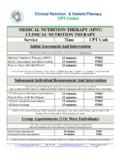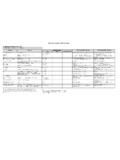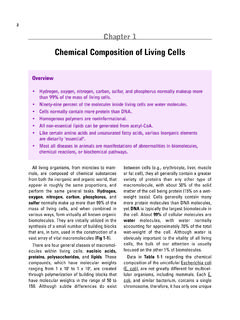Transcription of PEXSIG - Medsafe
1 New Zealand Data Sheet PEXSIG . Perhexiline maleate Presentation PEXSIG is a white to off-white, flat beveled tablet, plain on one side and scored with a break line on reverse. Diameter Each tablet contains 100mg perhexiline maleate. Uses Actions Perhexiline maleate is an anti-anginal agent. Its mechanism of action as an anti-anginal agent has not been fully elucidated in humans; however, in vitro studies suggest that perhexiline causes inhibition of myocardial fatty acid catabolism ( by inhibition of carnitine palmitoyltransferase-1: CPT-1) with a concomitant increase in glucose utilisation and consequent oxygen-sparing effect.
2 This is likely to have two consequences: i. increased myocardial efficiency, and ii. decreased potential for impairment of myocardial function during ischaemia. The inhibition of CPT-1 is likely to contribute to the anti-ischaemic effects of perhexiline. Animal studies indicate a direct action of the medicine on the myocardium dependent in part on the marked degree of tissue binding. In vitro studies indicate a non-specific depressant effect of perhexiline on all smooth muscle. It also inhibits the spontaneous depolarisation of Purkinje fibres in the dog myocardium and reduces sodium and potassium conductance.
3 Perhexiline has a cardiac membrane effect similarly to that of quinidine and procainamide. Perhexiline, whilst it does not affect resting heart rate, has been shown to reduce exercise induced tachycardia in man. Perhexiline has also been shown to have a mild diuretic effect in man and animals. Pharmacokinetics Absorption After oral administration, perhexiline maleate is well absorbed (>80%) from the gastrointestinal tract. Bioavailability Complete data on rate and extent of absorption are not available. Distribution There is a large volume of distribution of perhexiline that is probably related to the marked tissue binding of both perhexiline and its metabolites.
4 Adverse effects related to the central nervous system such as vestibular and cerebellar dysfunction are presumed because it crosses the blood brain barrier. It is not known whether it enters breast milk or crosses the placenta. Protein binding Perhexiline and its metabolites are highly protein bound (>90%). There is also some degree of binding to red blood cells. Metabolism The full metabolic fate of perhexiline has not been elucidated. The principal metabolites of perhexiline in man are monohydroxyperhexiline (which is excreted, in part, conjugated with glucuronic acid) and dihydroxyperhexiline that accounts for a relatively small proportion of the total metabolites.
5 Two unidentified metabolites have also been found in the faeces. The pharmacological activity of the metabolites is not known. Excretion Perhexiline and its metabolites are cleared from the body via extensive hepatic metabolism to mono- and dihydroxyperhexilines, and are excreted in the bile and urine in a ratio of 1:2. Hydroxylation of perhexiline is controlled by cytochrome P450 2D6 (CY P450. 2D6). Approximately 7% of Caucasians are poor hydroxylators, and usually clear perhexiline at approximately 10% of the rate of normal metabolisers.
6 A. few patients are ultrafast hydroxylators and require increased steady-state doses of perhexiline. Even in normal metabolisers, the clearance of perhexiline is readily saturable within the clinical dose range. This results in disproportionate changes in steady-state plasma perhexiline concentration per unit change in daily dose. Half-life Because of its non-linear metabolism, perhexiline cannot strictly be said to have a half-life at perhexiline concentrations normally measured in plasma. It is a relatively long acting medicine with marked variation in rate of elimination between individuals.
7 In the majority of patients, the medicine behaves as if it has a half-life of two to six days. In a small number of individuals, this may increase to greater than thirty days. Note While longer term studies have not been carried out, it is possible that, with continuing treatment, the metabolism and excretion of perhexiline may be altered. Studies in man have shown that in the first 1 to 2 weeks no unchanged perhexiline is detected in the urine but after that unaltered medicine appears in the urine in all subjects. Clinical Significance of Pharmacokinetics As a result of the marked variations in clearance, three types of population have been suggested: namely, fast, intermediate and slow metabolisers.
8 There is a wide range of variation between individuals in the daily levels of perhexiline ( to on a 400mg per day of perhexiline) and no studies have established the time taken to reach steady state conditions. However, it is likely that steady state blood levels will be achieved only after two to four weeks of therapy, and after longer periods in some patients. This time period should be borne in mind when dosage adjustment is being considered. In view of the above and considering the tissue binding occurs to a marked degree with both perhexiline and its metabolites (the pharmacological activity of the latter is unknown), accumulation with increased toxicity may result and could be a contributing factor in causing neuropathy.
9 Indications To reduce the frequency of moderate to severe attacks of angina pectoris due to coronary artery disease in patients who have not responded to other conventional therapy or in whom such therapy may be contraindicated. Note Because of the serious nature of potential side effects, perhexiline maleate should be reserved for use in patients with intractable angina who are refractory or intolerant to other agents and are not suitable candidates for coronary bypass surgery. Dosage and Administration Adults Commence therapy with 100mg daily.
10 Adjust progressively, up or down, at 2. to 4 weekly intervals based on the results of plasma level monitoring. It is generally advised not to administer more than 300mg per day, in divided doses, but in certain cases it may be necessary to use 400mg per day. The maintenance dose must be the minimum dose that is effective and well tolerated. Geriatric As for adults - but see Contraindications. Paediatric Not recommended for use in children as safety and efficacy in this age group has not been established. Monitoring of Plasma Levels Plasma perhexiline concentrations should be maintained between and Because of perhexiline's slow and variable clearance, the marked inter-subject variability in metabolism of the medicine and the potential for serious toxicity, regular monitoring of plasma levels of perhexiline is essential commencing at the end of the first week of use.

















